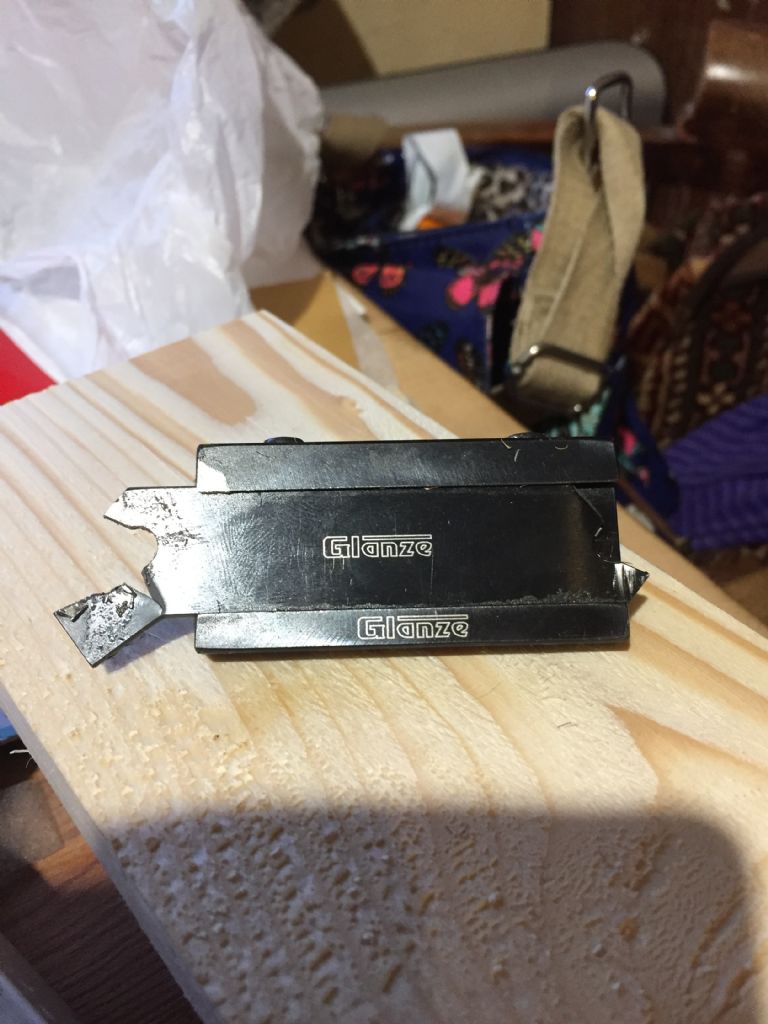These products are a little bit like Marmite. There are many factors involved. I for one, prefer to use this HSS-Co8 arrangement. As Andrew would ask: Are you a man or a mouse. In this particular case, I am a mouse.
Here are a few points:
1. The carbide products were/are originally made for use on CNC machines, which are:
- more rigid in all aspects than most of the manual machines we use
- run much faster than the manual machines we use… which is ideal for carbide tooling
2. There is far more vibration on manual machines, combined with 'lower' max speeds. This results in more 'rubbing' of the carbide inserts, and chipping of finer radius cutting tip.
3. The holder for these inserts:
- The high end holders (or shank in which the insert is held) for these inserts are made from carbide or similar exotic material. The general purpose holders for parting applications are made from various types/grades of steel….still, for CNC applications. See this Sumitomo link. They make both – carbide holders (SumiGrip) and steel holders (SumiGrip Jr.).
- The steel used in the Sumitomo holder is of a particular 'great' specification which they do not disclose, but it is very expensive. So, Sumitomo cut-off tools are not in ARCs range, as most of our customers would prefer to buy cheaper solutions for their purpose of use.
- The ones which are brown in colour which ARC supply for this purpose, are made from a good grade of alloy spring steel. This is not to be confused with certain other competitors which may have the same colour, which may or may not be the same material.
- The third type of holder for such purpose – black is yet another grade – which may or may not be more brittle.
Keeping the above points in mind, the results of use will be variable, based on:
A. Rigidity of the machine
B. Ability of user – new users – better to direct them to HSS, as chances of breakages increase.
C. Willingness, confidence 'to be strong' with positive engagement at the higher end of the machines speed spectrum, PROVIDED you have a manual machine which can handle it with low vibration, based on the material being parted off (soft/hard). Anyone can be willing and confident when carrying out this process on a correctly adjusted mini-lathe, on non-ferrous material such as aluminium or brass. As the material to be parted off becomes harder or dirty, things start getting interesting. The late John S, and our esteemed editor Neil and their likes were/are happy using carbide based parting off tools on a variety of materials on their lathes. Me, on the other hand, am happier with the HSS Co8 arrangement linked to above.
In conclusion, each user has their own experience, based on the above. Crank up the feed and speed?
Ketan at ARC.
Pete Rimmer.





